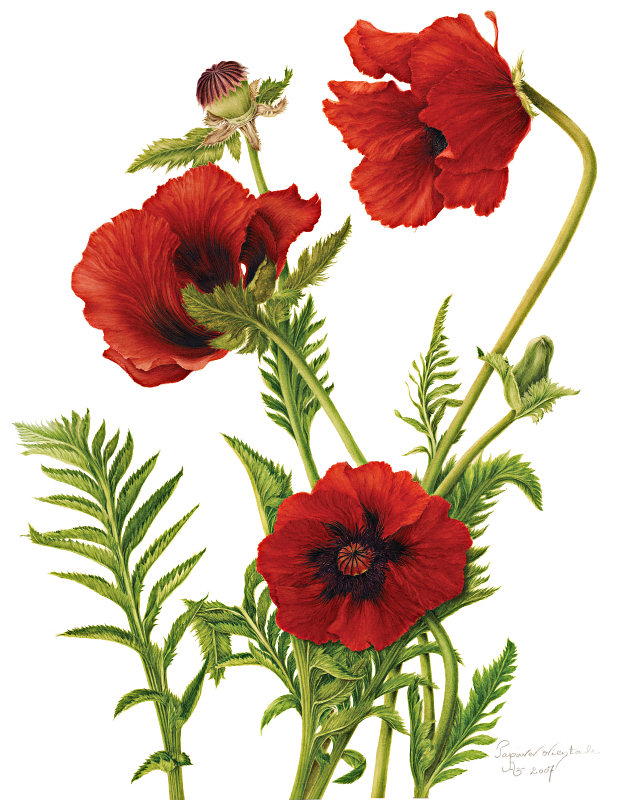SOLD
2007
Prints available

On a mid-May morning in my unkempt garden a brilliant burst of red struggled free from fuzzy green confines, like a crumpled chiffon dress out of a tightly packed valise. The creased item flared its skirts flamenco-style, forcing my paints and brushes to pay it homage.
Poppies have a long history—Mesopotamians, ancient Greeks and Egyptians were familiar with its soothing, restorative or euphoric effects. Demeter, goddess of the harvest and seasons, distraught at her daughter Persephone’s abduction, used the poppy to forget her sorrow in sleep.
The name papaver derives from pappa, the Latin for milk, (latex from the seed capsule being a sticky milky substance). Papaver somniferum, the opium poppy, quite distinct from oriental or field poppies, contains an opaque, milky sap throughout the plant.
In the past the whole plant, fruit and leaves, were crushed yielding a substance, Mekonion, less potent than opium. It was ingested, combined with wine, water and honey or milk. It was also smoked, used in poultices, eye-washes or made into pellets and suppositories. The ancients knew well the potentially fatal and addictive powers of opium. By the 19th century, tincture of opium (laudanum), a popular remedy, as easily available as aspirin is today, was a common ingredient in many patent medicines. A small dose would stop children crying, stave off hunger pangs, numb pain or sorrow.
Modern methods of opium extraction focus on the capsule which is notched or scored. The oozing sap contains sugars, proteins, ammonia, latex, gums, plant wax, fats, sulfuric, meconic and lactic acids and several alkoids such as morphine and codeine—the best known. Today cultivation of opium poppies is illegal in many countries.
Blood-red corn poppies sprang up from the battlefields of Waterloo and Flanders amidst the disturbed and blood-saturated soil, connecting death with the promise of resurrection. Immortalized in the famous World War I poem by John McCrae, the poppy in the 20th century has come to stand for wartime remembrance.
Poppies can soothe or kill, help us forget or remember, symbolize death or resurrection—what powers in a mere botanical specimen!